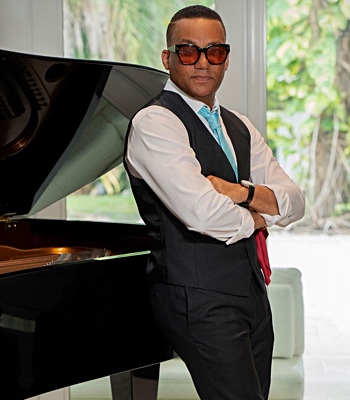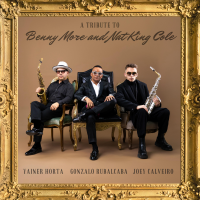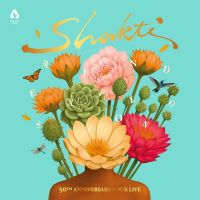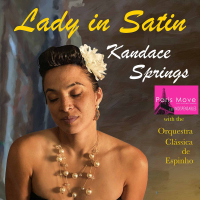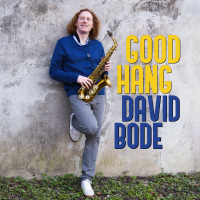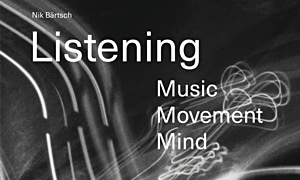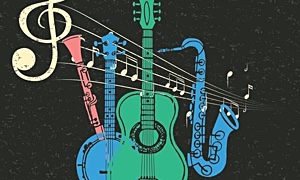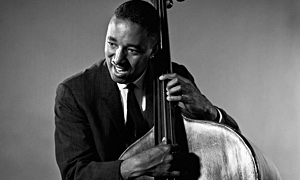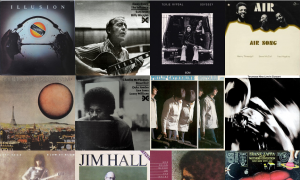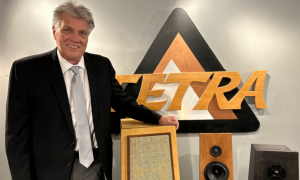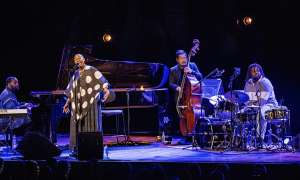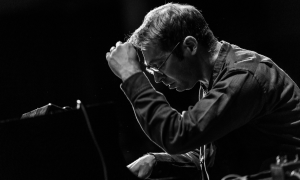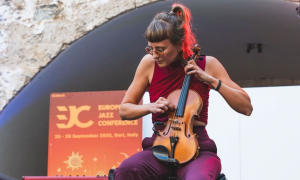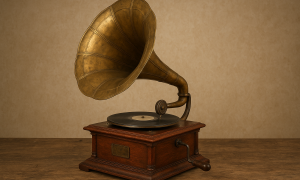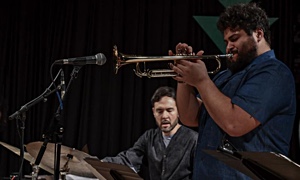Home » Jazz Articles » Book Review » Classic Jazz
Classic Jazz

Classic Jazz
Floyd Levin
Univ. CA Press
ISBN: 0520213602
Classic Jazz is about "traditional American Jazz", 50 years, classic New Orleans jazz and the artists who performed it in New Orleans and on the West Coast "about jazz - it's present, it's past, and it's evolution" Milt Hinton wrote on the slip case. A treasure of information conveying the passion and the soul of musicians and the music", Benny Carter reports in the forward, "throughout the last 40 years the dynamic duo of Floyd and Lucille Levin, a familiar site at musical events in Los Angeles and elsewhere, have always given their support and encouragement to performers and promoters. You will read about their work in the founding of jazz societies, the production of jazz events and the creation of honors to musicians including the annual Benny Carter Award." As Mr. Levin explains in the preface, "the term 'classic jazz' will cover . . . Ragtime, blues, New Orleans, Chicago, Kansas City, Dixieland, traditional, swing and mainstream" and in one sentence summarizes the music's cornerstones, "While technical ability is essential," he states, "the vital elements are sustained beat, combined spontaneous improvisations, and freedom to use imagination, ingenuity, and taste."
Classic Jazz release coincidently coincides with Ken Burn's "JAZZ" series in explaining not only the early history but by inference what's happening right now, because by following the examples, of these seminal jazz players, young jazz artists can discover how to successfully perform swing jazz today.
Historical highlights: Louis Armstrong's lyric to "Keep off Katie's Head" (the original title of "Sister Kate") "referred to Kate Townsend, a Basin Street madam", Kid Ory reported during a 1950 radio interview with the author. Written in 1918 and sold for $50.00 to Clarence Williams the original lyric Ory thought "too dirty" to sing was"the first jazz hit of the 1920s" but recorded for the first time by Ory in 1959. (See page 71 for the unexpurgated lyrics).
Articulate reporting of "Duke Ellington's Sacred Music Concert - New Orleans, 1970. An as if you were there description and quotes of the Duke's words from "In The Beginning, God" to the exciting finale, "Praise God and Dance".
The origin of Leonard Feather's phrase "the School of What's Happening Now". James P. Johnson's pronouncment that "he played jazz long before any of the Crescent City Bands traveled North." Mr. Levin's conclusion, "If a true birthplace of jazz must be identified, I think Jimmy would claim Harlem for that honor. . . . Those Harlem stride players created an exciting brand of music, blending ragtime with the blues to produce a rhythmic pattern. . . . ".
Remembrances through Scott Joplin's "only white pupil" Sanford "Brun" Campbell deliver a picture of ragtimes many revivals.
Reported the discovery of Ferdinand "Jelly Roll" Morton's last compositions (done for a 1940's rehearsal) now housed in Bill Russell's Historic New Orleans Collection and first performed at the 1998 New Orleans Jazz and Heritage Festival.
Eubie Blake's description of why Ragtime was "low down - and wasn't art." Floyd's motivation to publish Jess Stacy's notes about Louis Armstrong and Bix Biederbecke's early appearances on the Riverboat Capitol is historical revealing.
Occasional gems of description: "He was a very imposing figure seated on a high stool blowing his King B-flat cornet with a wad of chewing gum bulging from his cheek - always immaculately attired, a brilliant shine on his shoes and often torrid tones, among the most recognized sounds in jazz were also immaculate. . . . William Edward "Wild Bill" Davison . . . Made every ballad his own, inevitably ending it with his trademark - a low growling, insinuating coda that was the musical equivalent of an innocent wicked wink, (Los Angeles Times)."
Or selecting choice statements Artie Shaw made during a California State University lecture: "Jazz is a attitude; I much prefer just calling it music - American informal music."
The Influences of New Orleans Musicians on Classic Jazz - "celebrate the lore of old New Orleans and the people who keep it alive" and includes biography or personal observations of: Danny Barker - The Jazz Troubadour; Lorenzo Tio, Jr. and the Clarinetist of the Crescent City; historian Bill Russell; a 1948 interview with Louis Armstrong (without any info or quotes but Floyd concludes "Satchmo established guidelines that still govern the way pop tunes are played and sung". In Ambassador Satch he witnesses a fans' sign during the funeral's motorcade through Queens that read" WE LOVED YOU, SATCHMO'.
To explain the revival of "Jazz on the West Coast" Mr. Levin begins with memories of late 1930's radio broadcasts and an on the scene report of the Palormar Ballroom Fire (Best Article Award-1997 IAJRC), Les Konig's Good Time Records contribution (now a Fantasy imprint), Turk Murphy's influence in San Francisco, Capitol Records recording of trumpeter Pete Daily's influence as a model for Jack Webb in the film "Pete Kelly's Blues", The Association of Southern California Jazz Club's presentation of "Hello Louis" on July 3, 1070 that finally included Bob McCracken and a few pages on early musicians who performed in Floyd's own jazz series "A Night In New Orleans", co-produced with Barry Martyn during the 70's. Reed specialist Rick Fay recounting how his friendship with Mat and Rachel Domber began Arbors Records.
The final chapter chronicles Floyd's efforts to raise funds for a statue for Louis Armstrong in New Orleans envisioned by Danny Barker (and first championed by Clark Terry), the saga of planning "Hello Louis" for a 70th Birthday tribute in Los Angles to the delivering of Elizabeth Catlett's statue to Louis Armstrong Park in New Orleans.
As a new century begins Floyd Levin's "Classic Jazz" will always be a captivating summary of the musicians that kept the founders' tradition alive.
Tags
PREVIOUS / NEXT
Support All About Jazz
 All About Jazz has been a pillar of jazz since 1995, championing it as an art form and, more importantly, supporting the musicians who make it. Our enduring commitment has made "AAJ" one of the most culturally important websites of its kind, read by hundreds of thousands of fans, musicians and industry figures every month.
All About Jazz has been a pillar of jazz since 1995, championing it as an art form and, more importantly, supporting the musicians who make it. Our enduring commitment has made "AAJ" one of the most culturally important websites of its kind, read by hundreds of thousands of fans, musicians and industry figures every month.



